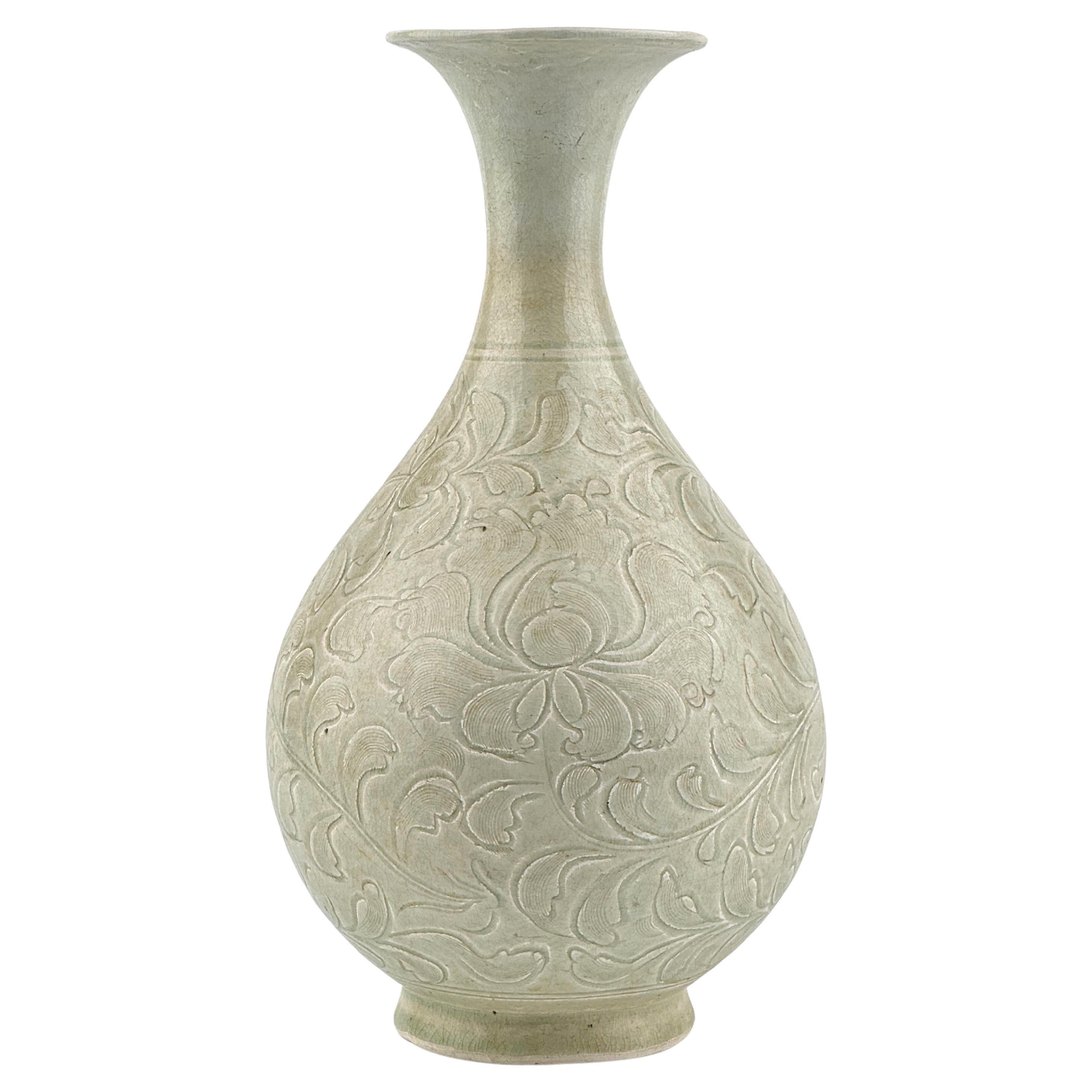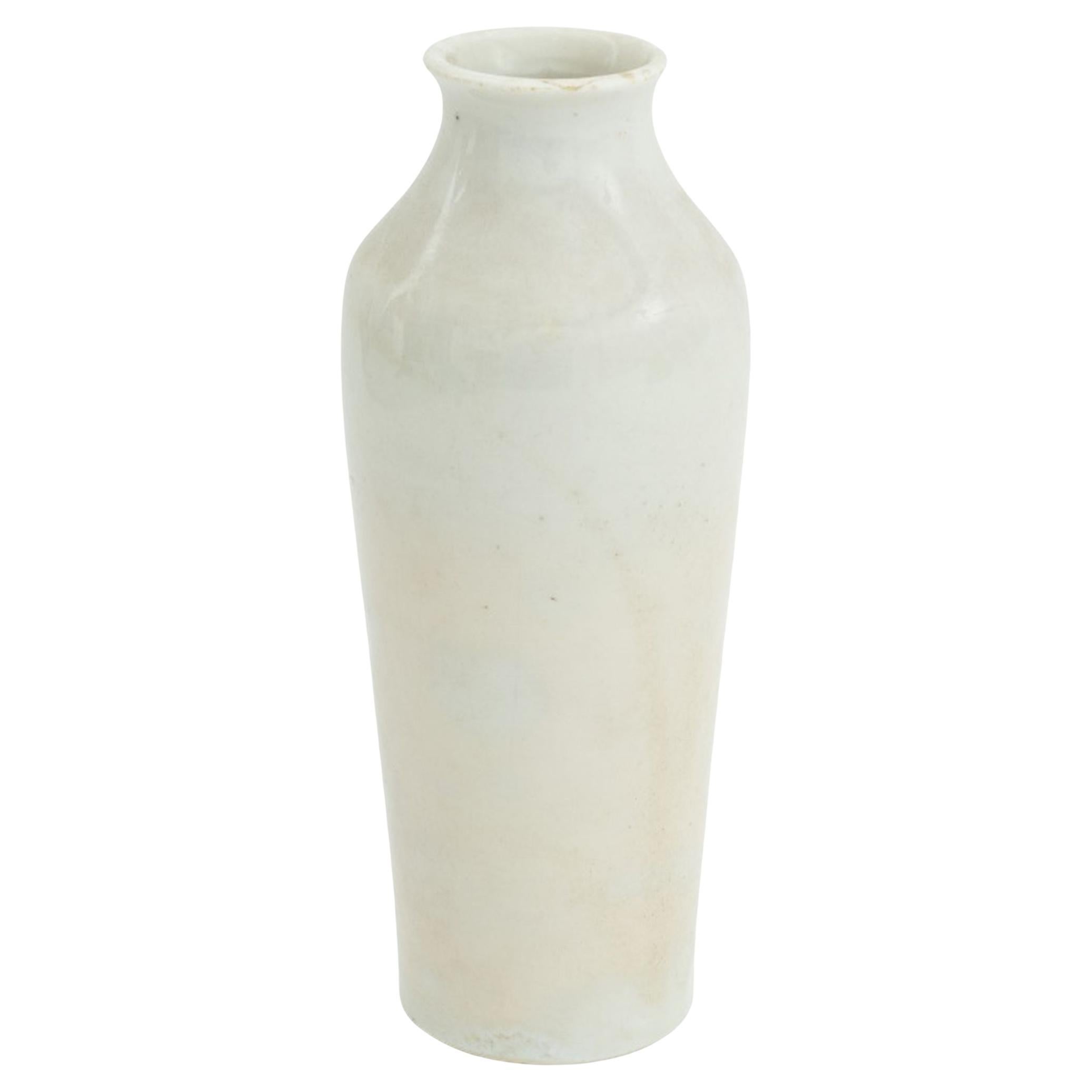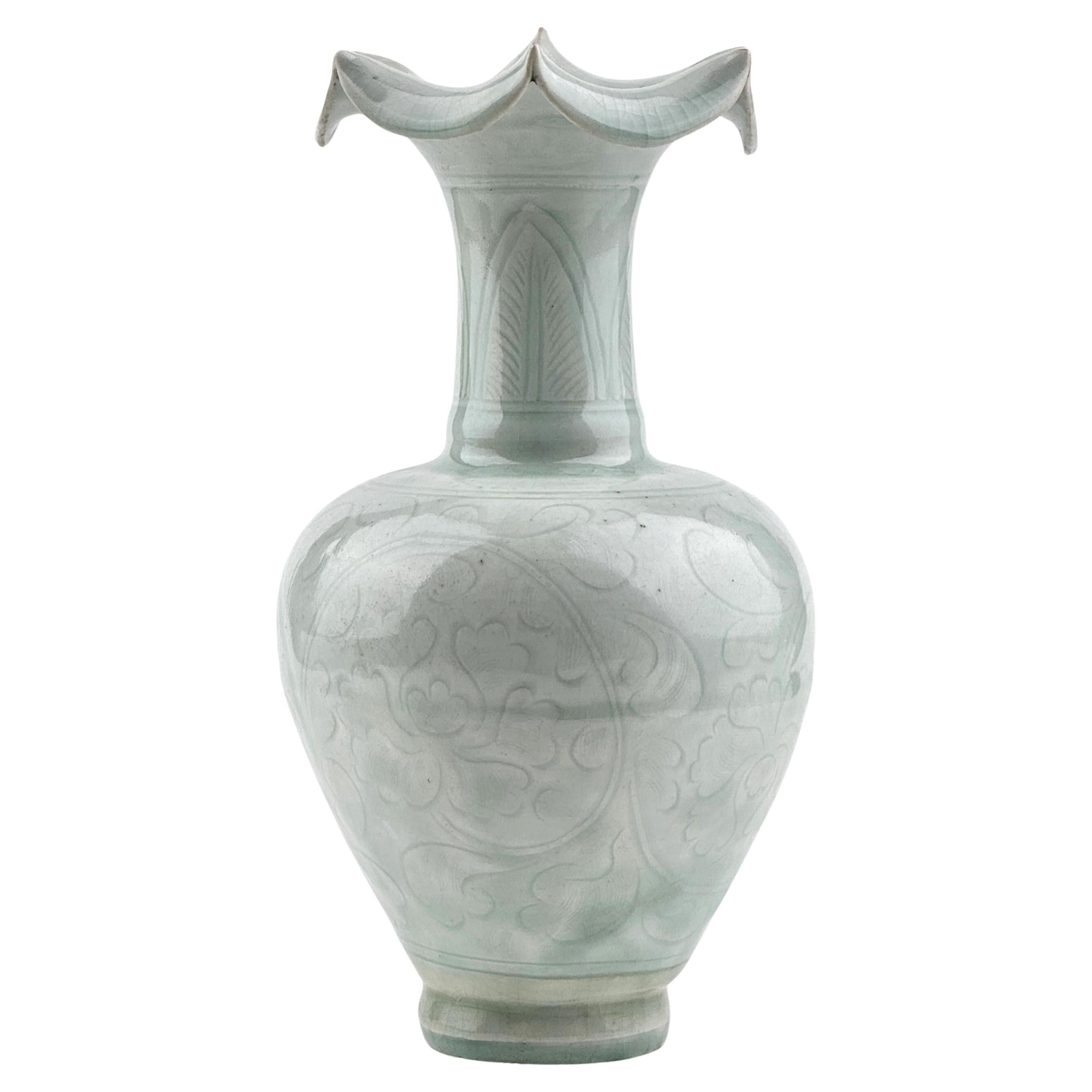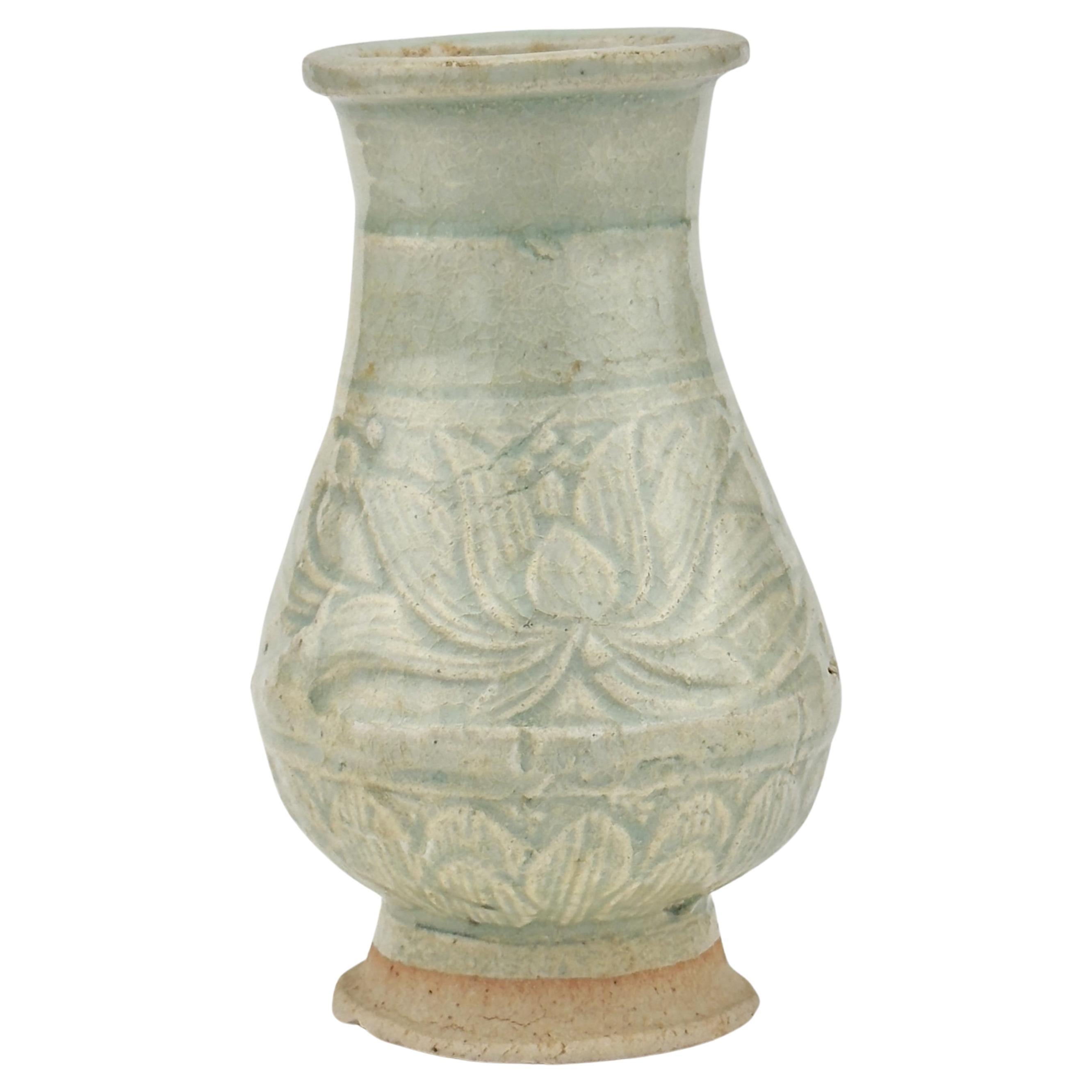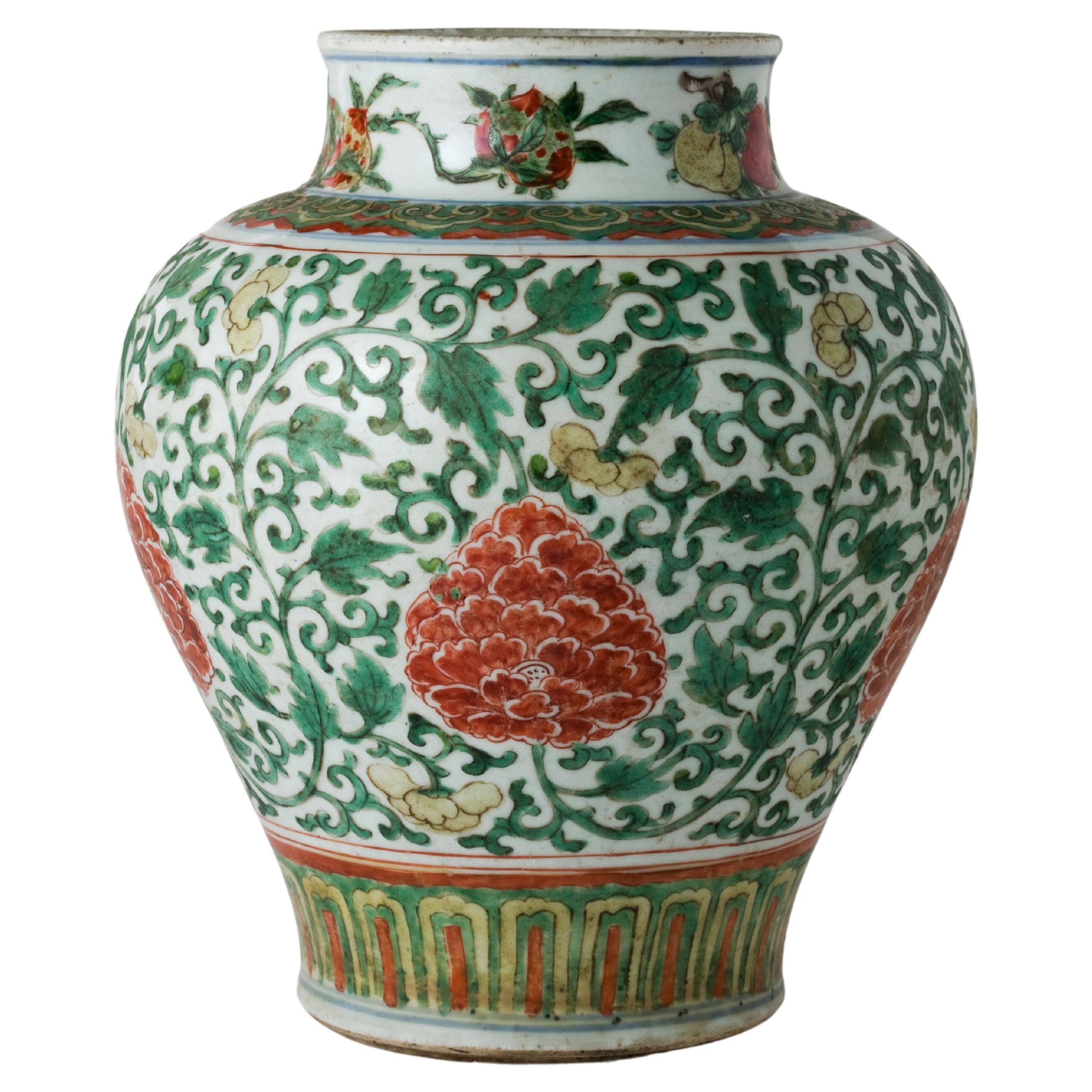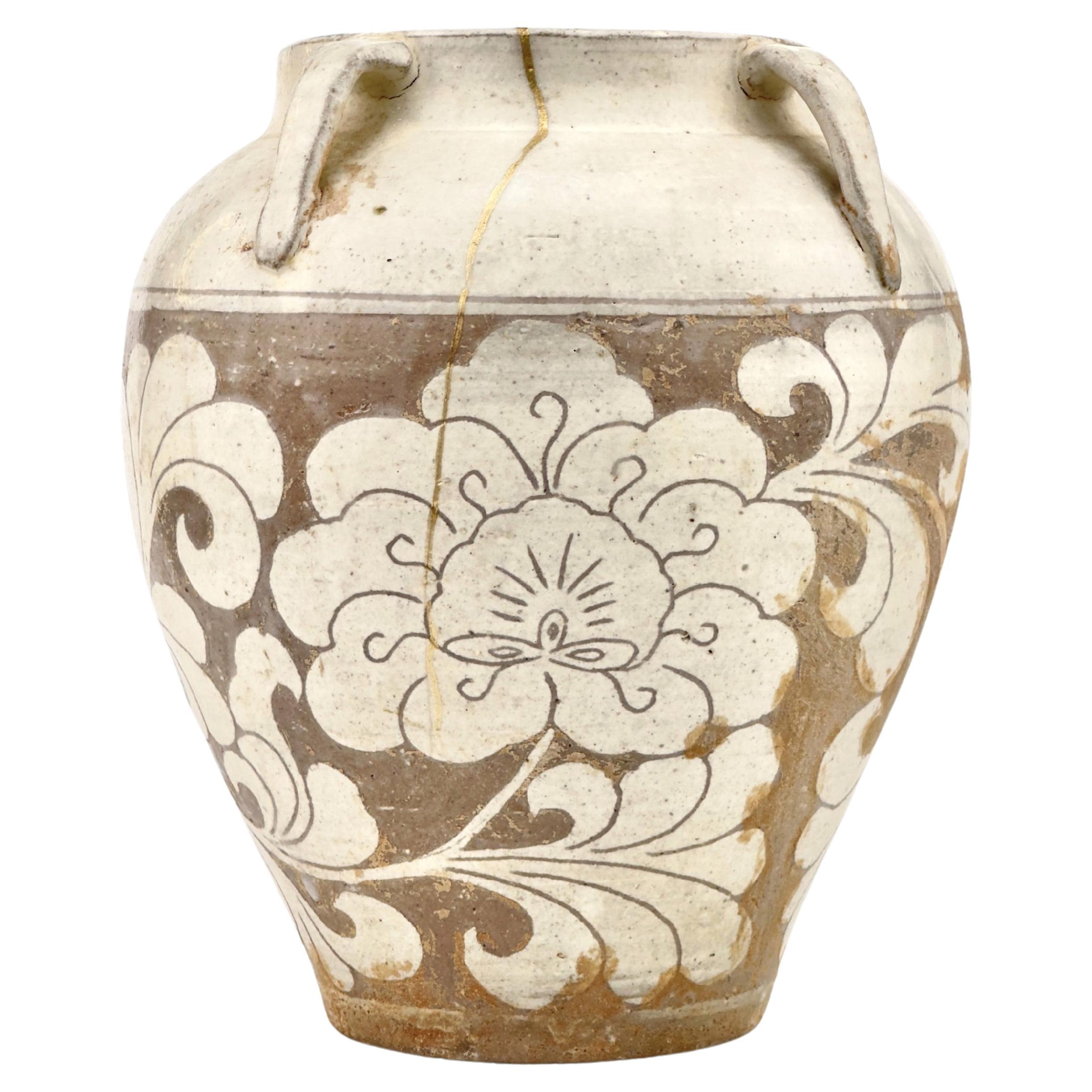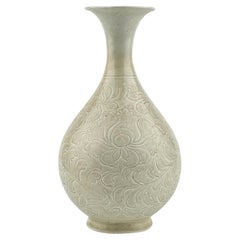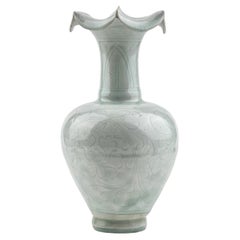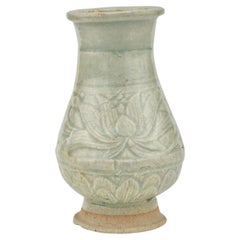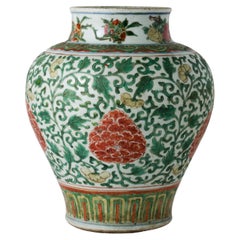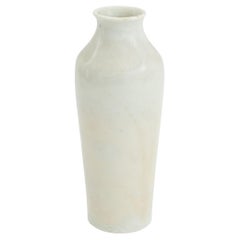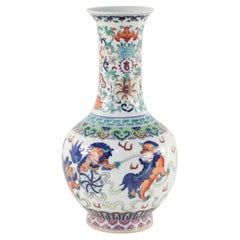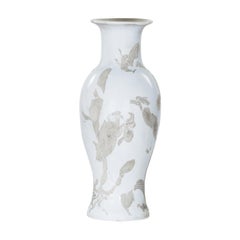Items Similar to A Carved White Ware 'peony' vase, Song-Yuan dynasty
Want more images or videos?
Request additional images or videos from the seller
1 of 13
A Carved White Ware 'peony' vase, Song-Yuan dynasty
$1,560
$3,90060% Off
£1,192.70
£2,981.7660% Off
€1,373.75
€3,434.3860% Off
CA$2,186.04
CA$5,465.1060% Off
A$2,440.51
A$6,101.2760% Off
CHF 1,278.79
CHF 3,196.9760% Off
MX$29,874.19
MX$74,685.4860% Off
NOK 16,240.63
NOK 40,601.5760% Off
SEK 15,312.85
SEK 38,282.1260% Off
DKK 10,252.46
DKK 25,631.1560% Off
About the Item
The vase is raised on a slightly splayed foot and flanked on the tall cylindrical neck by a pair of mask handles. The body is molded with lotus scroll pattern between a floral scroll band and an petal lappet band.
Period : Song-Yuan Dynasty(960~1368)
Type : Vase
Medium : Qingbai Ware
Provenance : Acquired in late 1990s, Hongkong
Reference :
1) Smithsonian National Museum of Asian Art - Accession Number F1984.18
2) Ashmolean Museum, Oxford - Accession no.LI1301.295
3) Sotheby's London 1 November 2023 - Important Chinese Art - Lot67
(Price : 5,080 GBP / Type : Closely related)
4) Christies Amsterdam 19–20 JUN 2012 - The Decorative Arts Sale, incl. Fine Paintings - Lot252
(Price : 4,375 Euro / Type : Closely related)
* Qingbai Ware
Qingbai ware, which translates to "blue-white ware," is a type of Chinese porcelain that was made at the Jingdezhen and other kilns in the porcelain-producing regions of China, primarily during the Song dynasty (960–1279) and continuing into the Yuan dynasty (1271–1368). It is known for its translucent quality and the pale blue-green glaze that characterizes most of its pieces.
The qingbai glaze was achieved using a small amount of iron in a reduction-fired atmosphere, which produced the subtle blue-green tint. The body of qingbai ware is typically made of a fine, white porcelain that is often referred to as 'artificial jade' due to its resemblance to the esteemed stone. The thinness of the body and the high firing temperatures used contributed to the translucent quality of the finished product.
Qingbai ware includes a range of items such as bowls, cups, vases, and ewers. The designs are usually simple and elegant, with an emphasis on the graceful lines and form of the objects. Decorative motifs, when present, are often incised, carved, or molded in relief and can include floral patterns, dragons, phoenixes, and other symbolic elements drawn from Chinese culture.
Over time, the technology and techniques used to produce qingbai ware evolved, leading to innovations in glaze and decoration that would influence later types of Chinese porcelain. Despite these changes, qingbai ware remains a distinguished example of the potters' art in Song and Yuan China, reflecting the refined aesthetic and cultural values of the period.
- Dimensions:Height: 9.85 in (25 cm)Diameter: 2.49 in (6.3 cm)
- Materials and Techniques:
- Place of Origin:
- Period:
- Date of Manufacture:960~1368
- Condition:Minor fading.
- Seller Location:seoul, KR
- Reference Number:1stDibs: LU9577238135172
About the Seller
4.8
Gold Seller
Premium sellers maintaining a 4.3+ rating and 24-hour response times
Established in 1999
1stDibs seller since 2023
38 sales on 1stDibs
Typical response time: <1 hour
- ShippingRetrieving quote...Shipping from: seoul, Korea South
- Return Policy
Authenticity Guarantee
In the unlikely event there’s an issue with an item’s authenticity, contact us within 1 year for a full refund. DetailsMoney-Back Guarantee
If your item is not as described, is damaged in transit, or does not arrive, contact us within 7 days for a full refund. Details24-Hour Cancellation
You have a 24-hour grace period in which to reconsider your purchase, with no questions asked.Vetted Professional Sellers
Our world-class sellers must adhere to strict standards for service and quality, maintaining the integrity of our listings.Price-Match Guarantee
If you find that a seller listed the same item for a lower price elsewhere, we’ll match it.Trusted Global Delivery
Our best-in-class carrier network provides specialized shipping options worldwide, including custom delivery.More From This Seller
View AllQingbai Yuhuchunping Vase Porcelain, Song Dynasty
Located in seoul, KR
Covered with a fine bluish glaze, the body entirely decorated with an incised decoration of elegant leafy scrolls and blooming lotuses. "Yuhuchunping" translates to 'spring wine bott...
Category
Antique 15th Century and Earlier Hong Kong Ceramics
Materials
Ceramic, Porcelain
$7,950 Sale Price
50% Off
A Carved Qingbai 'Chrysanthemum' Vase, Song-Yuan Dynasty(13-14th century)
Located in seoul, KR
The ovoid body to a tall neck, the body decorated with a chrysanthemum meander, covered overall in a translucent pale blue glaze. Traces of excavation can be seen in the dirt marks o...
Category
Antique 15th Century and Earlier Hong Kong Antiquities
Materials
Ceramic, Porcelain
$9,950 Sale Price
50% Off
White Ware Moulded Baluster Form, Yuan Dynasty, 14th century
Located in seoul, KR
This vase is made from a type of low-fired, porous clay and features a crackled glaze. It bears resemblance to the renowned funerary vases and covers adorned with applied decorations...
Category
Antique 15th Century and Earlier Hong Kong Antiquities
Materials
Ceramic, Porcelain
$950 Sale Price
50% Off
A Wucai 'Peony' Vase Transitional Period, 17th century, Transitional Period
Located in seoul, KR
The jar features a balanced and robust form, typical of the Transitional period, which was a time of significant change and innovation in Chinese porcelain art. The decoration is exu...
Category
Antique 17th Century Hong Kong Qing Antiquities
Materials
Ceramic
$2,535 Sale Price
35% Off
Cizhou Lotus Carved Jar, Song-Yuan dynasty
Located in seoul, KR
This jar features a carved design, which is typical of Cizhou ware. It has a creamy white and brown color scheme, and the prominent decoration of lotus flower, which is a common motif in Chinese art and culture, symbolizing purity and enlightenment.
The carving technique involves coating the vessel with a layer of white slip (liquid clay), then carving away parts of it to create the design, revealing the darker clay body beneath. This technique allows for a strong contrast between the background and the carved motif.
Period : Song-Yuan Dynasty
Type : Jar
Medium : Cizhou Ware
Size : 21.5 cm(Height), 11cm(Mouth Diameter)
Provenance : Acquired in 1999, Hongkong
* Cizhou Ware
Cizhou is the name given to a number of stonewares, grey or buff, of varying degrees of hardness, with painted, incised or carved decoration on a clay slip. These stonewares were not only made in the region of Cizhou, Hebei Province, but in several provinces of China during the Song, Yuan and Ming periods. The great centres of production were in the north of China in the provinces of Hebei, Henan and Shanxi.
Cizhou wares seem to have been very popular, made for a clientèle of rich merchants, at a period when the paintings of famous...
Category
Antique 15th Century and Earlier Hong Kong Antiquities
Materials
Pottery
$3,835 Sale Price
35% Off
Carved Longquan Celadon Vase, Yuan-Ming Dynasty
Located in seoul, KR
A graceful baluster form with a flared mouth, a rounded body, and a slightly raised foot. The vase features two intricate handles in the shape of animal figures holding large looped ...
Category
Antique 15th Century and Earlier Hong Kong Ming Antiquities
Materials
Celadon
$4,900 Sale Price
30% Off
You May Also Like
Chinese White Porcelain Bottle Vase
Located in Astoria, NY
Chinese White Porcelain Bottle Vase. 7.5" H x 3" Diameter. Provenance: From a 35 East 75th Street Estate.
Category
Early 20th Century Chinese Qing Ceramics
Materials
Porcelain
Chinese White Globular Kylin Motif Porcelain Vase
Located in Queens, NY
Chinese (late 19th Century) white, globular porcelain vase with colorful kylin beasts, symbolizing good luck, amid geometric and floral designs.
Condition: Good; Wear consistent wit...
Category
Antique 19th Century Chinese Chinese Export Vases
Materials
Porcelain
Chinese Dingyao Vase, c. 1100
Located in Chicago, IL
Dingyao porcelain, often called Ding ware, is famous for its creamy-white coloring, refined forms, and low-relief surface patterning. Ding ware was produced ...
Category
Antique 15th Century and Earlier Chinese Minimalist Ceramics
Materials
Stoneware
19th Century White Altar Vase with Silver Floral Design
Located in Yonkers, NY
A Qing Dynasty antique altar vase from the 19th century with beautiful silver floral designs that decorate the bright white body of the entire antique porcelain vase. Our Qing Dynasty antique vase from...
Category
Antique 19th Century Chinese Qing Vases
Materials
Ceramic
A Pale Celadon Glazed Bottle Vase, Xuanhe Mark, 20th Century or Possibly Earlier
Located in ARMADALE, VIC
A Pale Celadon Glazed Bottle Vase, Xuanhe Mark, 20th Century or Possibly Earlier
Description:
The fine lobed body with flared scalloped floriate rim and raised foot. Incised with ru...
Category
20th Century Chinese Ceramics
Materials
Porcelain
$270 Sale Price
40% Off
Free Shipping
Korean White Glazed Porcelain Bottle Vase, Joseon Dynasty, 18th Century
Located in Austin, TX
A quiet and elegant Korean white glazed bottle vase, Joseon Dynasty, late 18th century, Korea.
The graceful vase beautifully proportioned, resting on a short recessed foot, with a...
Category
Antique Late 18th Century Korean Ceramics
Materials
Porcelain
More Ways To Browse
Antique China Ware
Peony Vase
Green Ware
Song Dynasty
Chinese Song Dynasty
Song Dynasty Furniture
Song Porcelain
Jade Vases Antique
Song Dynasty Vase
Thin Porcelain Chinese
Song Dynasty Porcelain
Green Dragon Vase
Blue And White Porcelain Dragon
Peonies In Vase Painting
Chinese Dragon And Phoenix
Dragon Vase Ceramic
Chinese Jade Vase
Phoenix Chinese Vase
